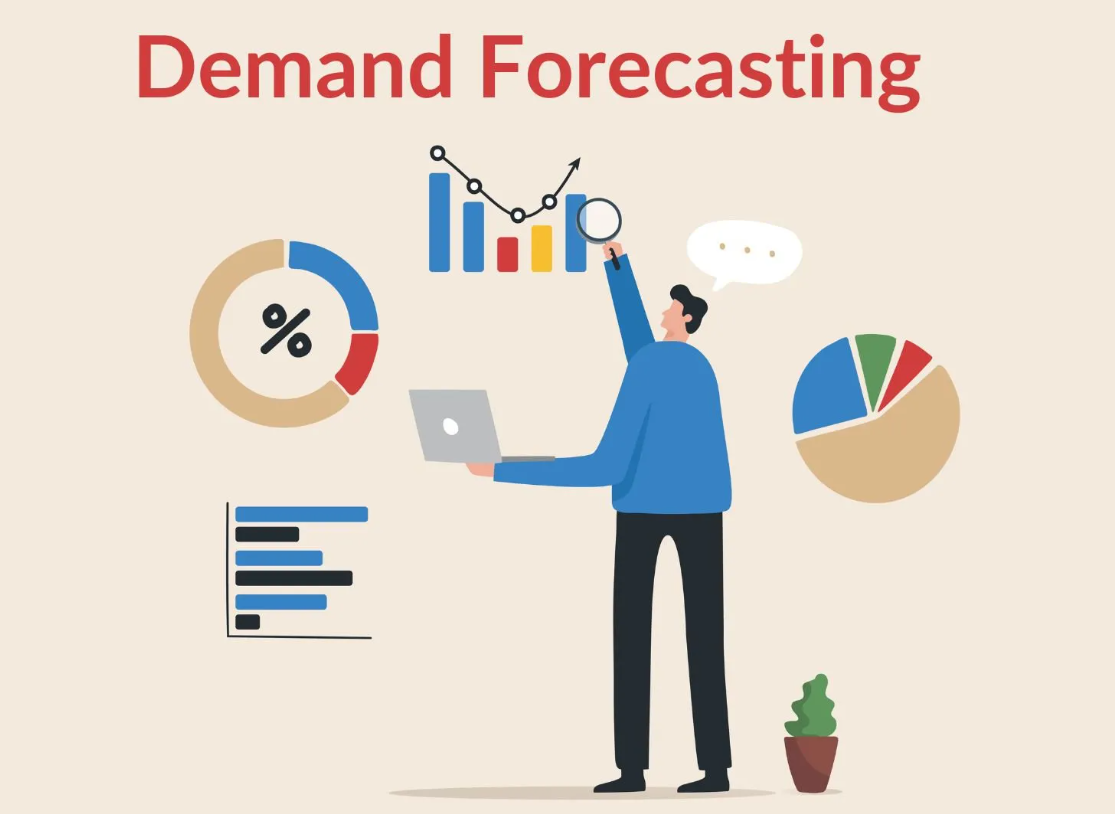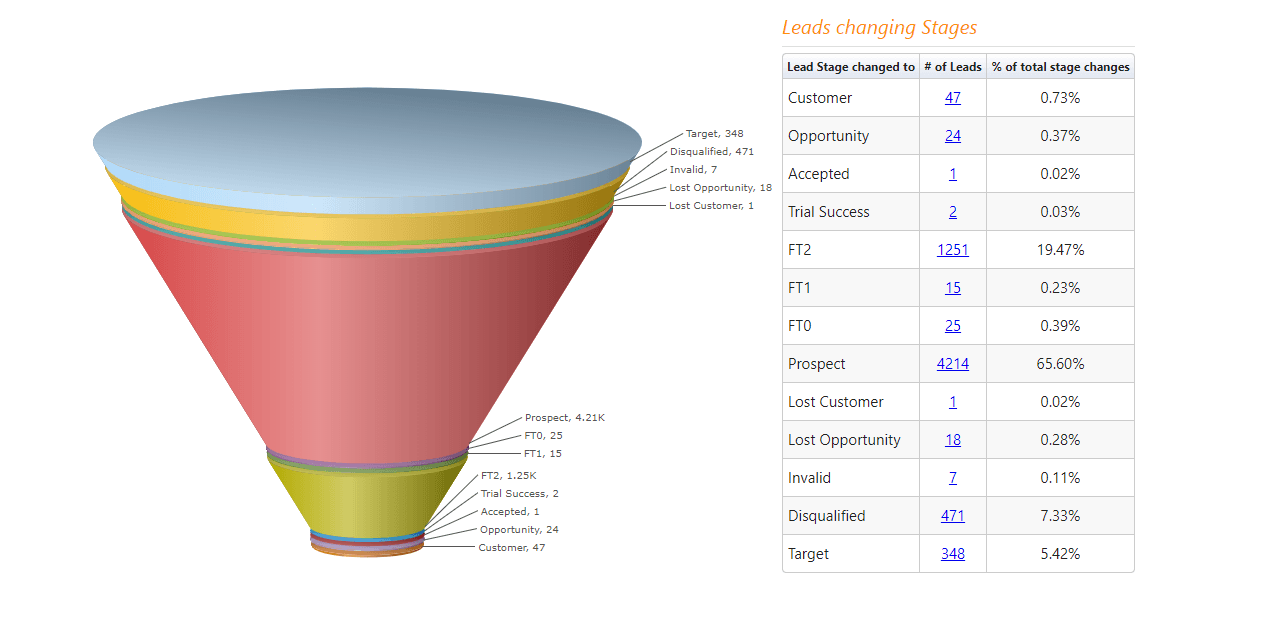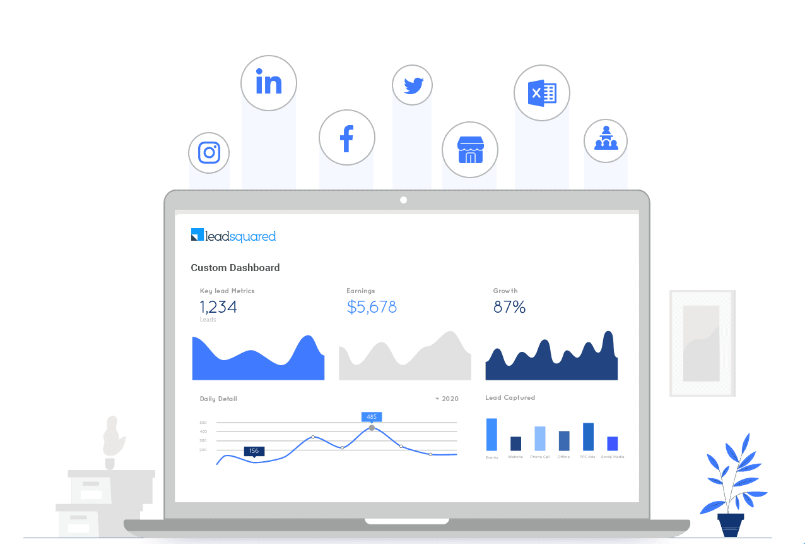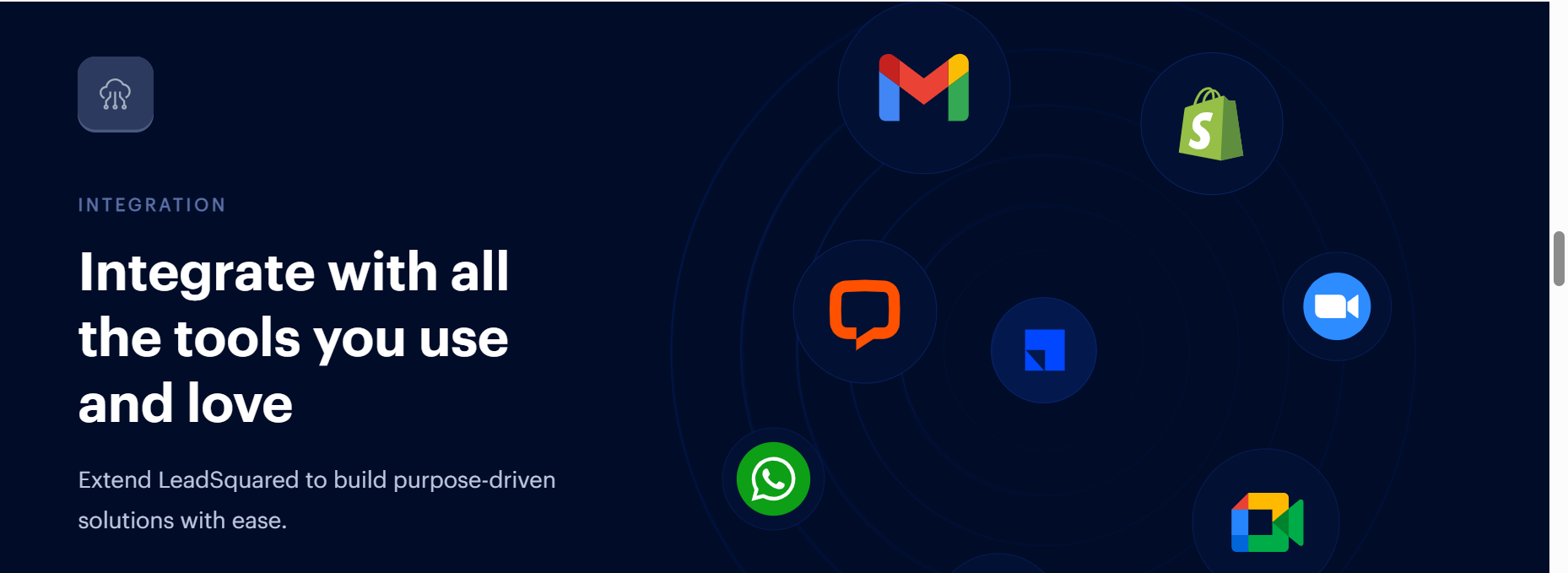XYZ was a large consumer goods company that sold perishables through supermarkets, and often overcompensated for the risk of stock outs – by keeping 12% more inventory on the shelves than it sold. This led to a costly error over time. Why did things keep going wrong? After analysis, folks at XYZ determined the key reason was that its demand forecast was wildly inaccurate for many of the things that made up most of the volume sold, even though it was very accurate for high-volume items.
Being able to forecast customer needs and market trends is more important than ever in today’s “crazy busy” business world. This is where demand forecasting comes in, and it’s vital for all businesses. Whether you have a small e-commerce store or a big manufacturing plant, understanding and implementing demand forecasting techniques can be the difference between winning and just surviving.
According to McKinsey data, 64 percent of B2B businesses anticipate increasing their efforts in predictive analytics. In this post, let’s dive deeper into demand forecasting, the steps to do it, its methods, and how it can change things up in your business for good. But first:
What is Demand Forecasting?
In simple terms, demand forecasting is the process of predicting customer demand for products or services. It involves looking at historical data, market trends, and other relevant factors to estimate which and how much of a product or service customers will want to buy in the next few weeks, months, or years. This is not just guessing; it’s a science that combines data analysis, statistical modeling, and market intelligence to make predictions.

Demand forecasting is the foundation of many business decisions. It refers to the process of demand planning, or predicting the demand for materials to ensure you can deliver the right products and in the right quantities to satisfy customer demand. It informs inventory planning, so you have enough stock to meet customer demand without tying up too much capital in dead stock. It guides production scheduling so manufacturers can use their resources efficiently and minimize waste. It’s key to resource allocation decisions so businesses can invest wisely in people, equipment, and raw materials.
Understanding Customer Demand
Understanding customer demand is crucial for businesses to make informed decisions about production, inventory, and pricing. By analyzing historical data and market trends, businesses can predict future demand with greater accuracy. This involves looking at past sales data to identify patterns and trends, which can then be used to forecast future demand.
Additionally, understanding customer demand helps businesses optimize their supply chain, ensuring that they have the right products in the right quantities at the right time. This not only reduces the risk of stockouts and overstocking, but also helps in efficient resource allocation and inventory management. Accurate demand forecasting helps businesses plan production in order to meet consumer demand.
The Importance of Demand Forecasting – 6 Advantages
Why is demand forecasting important? Forecasting demand reveals how much product or service consumers may want to purchase over a period of time, and plan accordingly.
Demand forecasting is something that forms the bottom line of any business. For this reason, the importance of accurate demand forecasting can never be overemphasized. Long-term demand forecasting is essential for strategic planning, helping businesses make informed decisions about capacity expansion and new market entries.
Here’s a closer look at why it’s so important for businesses today:
1. Enhanced profitability
Aligning production with forecasted demand allows firms to optimize and minimize wastage. Reduced operational costs coupled with enhanced margin returns. When you produce only what you expect to sell, the unsold inventory does not eat into your profits.
2. Better inventory management
Without a doubt, one of the major issues any business will face is achieving a proper balance in terms of levels of inventory. Too much stock ties up too much capital and imposes increased storage costs, but too little inventory may lead to stock outages and lost sales. Demand forecasting keeps the balance between overstocking and understocking; it helps your business keep running on the best possible inventory levels.
3. Increased customer satisfaction
The world moves fast, and so do today’s customers. Thus, a business can capture demand by keeping products where and when the customer needs them. Customer satisfaction, therefore, is achieved much more quickly. High customer satisfaction is expected to translate into higher loyalty and positive word-of-mouth marketing.
4. Operational efficiency
With available demand forecasts, better planning can be done. This would mean streamlined operations in supply chain management, workforce scheduling, and resource allocation. Therefore, the fruit would be better, more streamlined, and more responsive operations that easily respond to any change within the marketplace.
5. Strategic long-term decisions
Accurate demand forecasts provide priceless insight. Whether business leaders decide to expand into new markets, launch new lines of products, or scale back on less successful offerings, demand forecasting data will allow them to make the right decisions about what their company will do in the future.
6. Financial planning and budgeting
Demand forecasting plays a pivotal role in financial planning and budgeting. By having a clear and accurate forecast of future demand, businesses can make informed decisions about where to allocate resources, how to price products, and when to invest in new opportunities. This foresight allows you to optimize their financial performance, ensuring that you are well-prepared for future growth and expansion. Accurate demand forecasts help in setting realistic revenue targets, planning expenses, and making strategic decisions that align with your company’s long-term goals.
Types of Demand Forecasting
Demand forecasting allows your business to optimize use of resources, production, as well as inventory. The following are the major types of demand forecasting and should be understood:
Macro-level forecasting
This has to do with the general economic environment pertaining to the economy as measured by the Index of Industrial Production (IIP), national income and general level of employment, etc. It studies the trends in the economy, business disruption that can be caused by external factors.
Use cases: General market study, opportunity for expansion, changing markets.
Industry-level forecasting
Industry level forecasting involves the demand for the product of the whole industry.
For example: Cement demand in India, automobile demand in India, lead management system demand in India, and so on.
Firm-level forecasting
It refers to predicting the demand for a product of a specific firm. For example, demand for Birla cement, demand for Raymond clothes, etc., demand for LeadSquared’s SIERA.
Passive demand forecasting
his involves using historical data to predict the future, assuming that future conditions will be similar to those observed in the past.
Use cases: Mature companies with stable sales.
Active demand forecasting
In active demand forecasting, forecasts are customized. It looks at market research and external factors when forecasting future demand. It puts forecasts on the basis of actual customer behavior and market trend.
Use cases: Growth companies with high-level aggressive growth plans and marketing/product development.
Short-term forecasting
This is forecasting for the near future – a period of days to weeks ( less than 12 months). It is for major applications, like those in inventory management.
Use cases: Upcoming promotions (i.e. Black Friday/Cyber Monday sales).
Long-term forecasting
Forecasting demand over months or years is expected, which assists in strategic planning. It studies seasonal trends over more than 12 months.
Use cases: Opportunity for expansion, business strategy planning
Internal forecasting
The factors which lie within the control of the business, such as pricing and marketing strategies, are taken into consideration.
External forecasting
Economic conditions and competitor actions are also taken into consideration – as factors outside the control of the business.
How to Forecast Demand – 7 Key Steps
Now that you know the importance and benefits of demand forecasting for your business, how do you forecast demand? Let’s examine the step-by-step process with three core steps.
1. Define objectives
Clearly define what your forecast is to achieve and what outputs you require. For example, a new fitness tech startup would want to forecast the optimal levels of inventory for their product release or forecast which holiday seasons will increase demand.
2. Identify data sources
For quantitative data, this could be done using internal sources such as your inventory management software, your ERP system, or sales spreadsheets. For qualitative data, this could be through customer surveys or even creating a focus group.
3. Gather historical sales data
Good historical data form a successful forecast. Start gathering elaborate sales data over past periods. The information should include the following:
- Quantity of sales for each product or service
- When the sales were recorded or took place to help catch up on seasonal patterns.
- Prices of the products or services that were sold
- Promotions and special events that may have affected sales

Make sure your data is clean, accurate, and spans a significant time period to capture long-term trends and cyclical patterns. But also keep in mind:
“Disruptions such as the COVID-19 pandemic is causing historical data that reflects past conditions to quickly become obsolete…”
– Jim Hare, Distinguished Research Vice President at Gartner. (Via Gartner Press Release)
4. Note market trends and seasonal patterns
Once you have your historical data, it’s time to look for patterns. This includes the following:
- Seasonal Fluctuations in Demand: Identify growth or decline trends over long periods.
- Specific Cyclical Patterns: Patterns that materialize over longer durations.
Tools for time series analysis can prove to be particularly useful at this stage. Search for trends between sales and exogenous elements like economic indicators, weather conditions, or industry-related events.
5. Integrate customer feedback and market research
Although history is important, sometimes there is much to anticipate. This is when customer insights and overall market research become crucial. Consider these factors:
- Analysis of social media trends and sentiment
- Market reports and industry forecast study

LeadSquared CRM can help immensely in the process. It enables you to collect, collate, and analyze customer feedback effectively, which gives you considerable benefits as you make accurate predictions. It also lets you create customer analysis reports seamlessly. The analytics tools of LeadSquared can handle multiple customer data.
6. Evaluate the data
There will always be trends that keep reappearing, whether it is in terms of demographics, product categories, time zones, locations, or holidays. For instance, perhaps the startup mentioned earlier opts to employ the active demand forecasting model on their data. It discovers an emerging market trend in the said industry of preference for people to use wearable health-tracking shirts over a wristwatch.
7. Interpret results
Align your budget decisions and business with your findings, then compare your sales performance with the original forecast that was made. Make changes as needed to improve the forecasts. The startup may realize health monitoring shirts only constitute a craze, declining in sales over time throughout the entire sector. Then, they might opt to sell more smart health watches instead.
Demand Forecasting Methods
Now, let’s understand the various methods of demand forecasting. How do you do demand forecasting? We’ll tell you. There are several different demand forecasting method options.
Demand forecasting techniques generally fall into two broad categories: qualitative and quantitative methods. Let’s discuss each in greater depth:
Qualitative Methods
Qualitative methods often rely on expert judgment, market research, and subjective appraisal. They are particularly useful when little or no historical data is available or for new products or markets:
Expert Opinions
Consult with industry experts, seasoned sales professionals, and market analysts to gain insights into future trends.
Market Research
This involves accessing information and insights through surveys, focus groups, and interviews on how customers are likely to behave and the prevailing market sentiments.
Gather input using forms, surveys, questionnaires, and polls.
Using end-to-end platforms like LeadSquared, you can completely automate the process. Feedback forms and surveys can be sent by text message, email, or notification. You can also track your survey questions through it!
What’s more? You can use LeadSquared’s tools to compile input from many platforms and transform it into insights that can be presented in reports easily and put to use.
Delphi Method
This requires getting a panel of experts on anonymity whose snowball forecasts and rationales have to be elicited. It is an iterative process where the experts revise their predictions in the light of what the group says; to move ahead.
Scenario Planning
This is creating several possible future scenarios and estimating the demand in each of them. That helps prepare for different conditions.
Quantitative Methods
These data-driven techniques rely on statistical models to determine certain patterns and predict behavior based on historical data.
Moving averages
This is a very simple technique in which the average of a predefined number of past periods is used to predict future demand. It’s useful for smoothing out short-term fluctuations.
Exponential smoothing
This method gives more weightage to recent data and is responsive toward changes in trend.
Regression analysis
This is a statistical technique used to develop predictive models based on different factors, such as price, marketing spends, or economic indicators.
This is a time series analysis, decomposing historical data into trend, seasonal, and cyclical elements to try to predict future values.
Machine Learning (ML) and Artificial Intelligence (AI) techniques
These techniques utilize massive historical data sets to recognize patterns and trends, thus enabling organizations to predict with greater precision what the future holds in terms of sales. Algorithms associated with time series analysis, regression models, and neural networks are most commonly used to analyze seasonal fluctuations and market dynamics.
The more significant point, however, would be that AI-driven technologies can consider external factors like economic indicators and consumer behavior, making the forecasts even stronger.
The method chosen for demand forecasting would depend upon the business type, available data, and the state of the market. However, a combination of methods proves to be the most effective.
Demand Forecasting Automation for E-commerce
Automating demand forecasting can make a big difference for e-commerce businesses in terms of accuracy and efficiency. Given the huge magnitudes of data generated through online interactions and transactions, manual forecasting is impossible.

LeadSquared’s sales and marketing analytics tools can help e-commerce businesses automate their demand forecasting via:
- Data Integration: It collects and integrates data from various sources automatically, including sources like sales platforms, web analytics, and customer interactions.
- Pattern Recognition: Allows you to identify complex patterns and trends that you might otherwise not see.
- Real-time Updating: Update forecasts in real time with new data so you can always base your predictions on the most recent information available.
You can also quickly generate forecasts against multiple scenarios, giving you an opportunity to prepare for several market conditions.
Tips for Effective Demand Forecast Planning
Here are a few best practices to make the best use of your demand forecasts:
Keep them updated
Market conditions change rapidly, so keeping your forecasts updated is advisable.
Regional preferences, shipping logistics, and local market conditions can all influence demand for certain products.
Schedule regular reviews and be ready to alter your predictions as you get more information.
Combine methods
Do not rely on a single forecasting method. Consider all the steps we mentioned and use both qualitative and quantitative methods, which will lead to a more complete and refined overview.
Consider external data
Look at your internal data, but don’t forget the overall economic environment. Ask yourself whether you are in an economic boom, whether your competitors are cutting prices or upgrading product lines, and whether there is an upward or downward trend in your industry. In addition, geopolitical factors might be influencing demand.
Leverage technology
Platforms like LeadSquared offer advanced CRM and analytics solutions to increase the accuracy of your demand forecast. They can automate procedures, process enormous data, and reveal patterns you may not notice otherwise. Make good use of a comprehensive CRM system.
Collaborate across departments
In developing the forecast, one has to collaborate with a sales, marketing, operations, and finance team because each segment brings exclusive insights to increase the precision of your predictions.
Monitor accuracy
It is always advisable to compare your forecast with the actuals. This will help you know which areas need to be corrected and how to refine your forecasting methods over time.
Plan for uncertainty
No forecast is perfect. Always plan for contingencies, as sometimes you cannot anticipate sudden fluctuations in demand.
Invest in training
Ensure that your team realizes the importance of demand forecasting, but also show them how to read and act upon the produced forecasts through intensive training and necessary resource materials.
In Conclusion
Effective demand forecasting is no longer a luxury but more of a necessity for businesses seeking to stay competitive in today’s market. By accurately forecasting future demand, companies can optimize their operations, enhance customer satisfaction, and boost the bottom line. It does not matter if you are a small business owner or a large corporation; strong demand forecasting practices can boost your business performance.
After all, demand forecasting is not only a one-time job but an iterative learning process as you garner experience and hone it. As the additional data coupled with more experience increases, your forecasts will be all the more accurate and, therefore, a more valuable strategic tool to aid in decision-making processes.
LeadSquared CRM is totally worth a shot if you want to track, record, and extract insights from sales, marketing, or customer data. It has sophisticated monitoring and reporting features!
Do not let uncertainty hold you back. Unscramble data and convert insights into actions – book a demo today!









